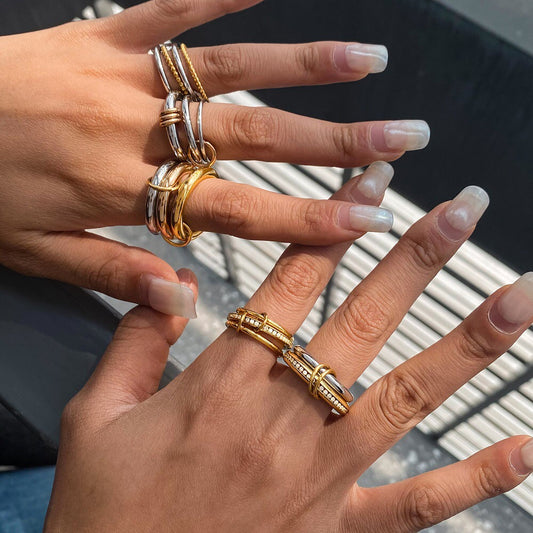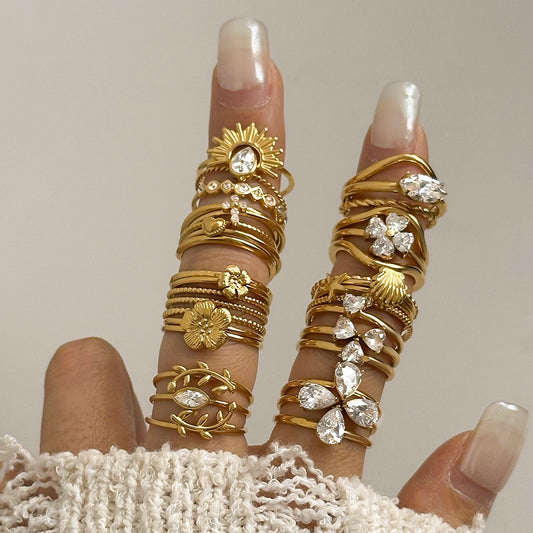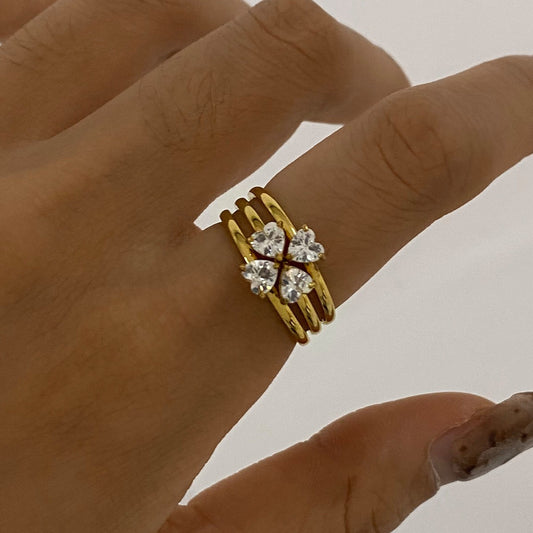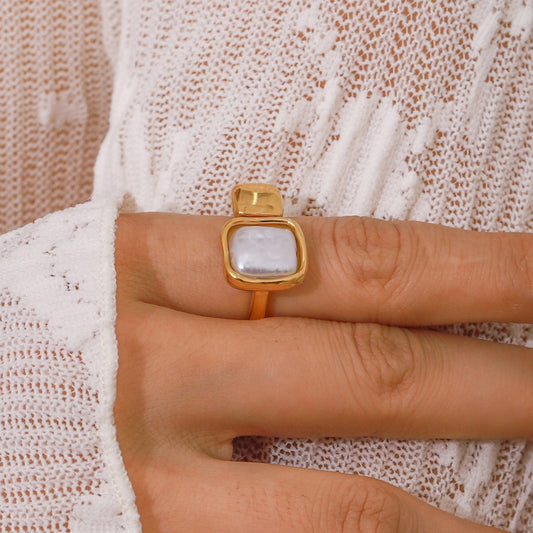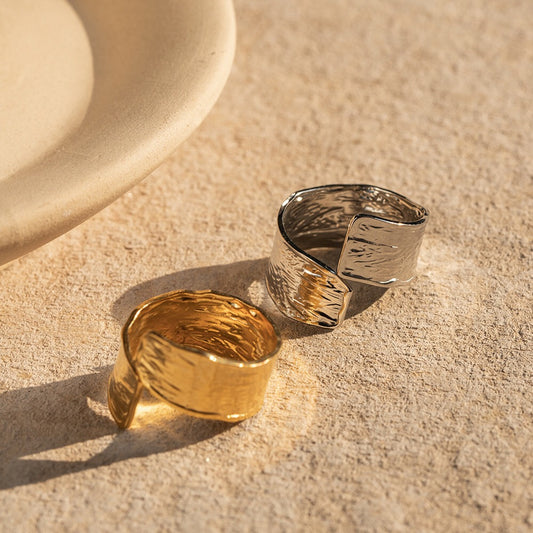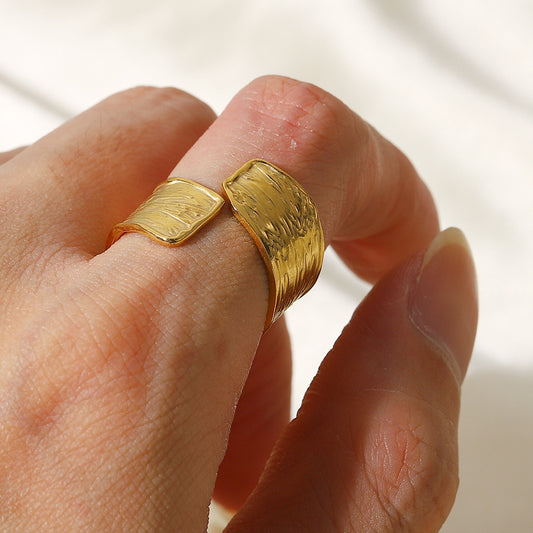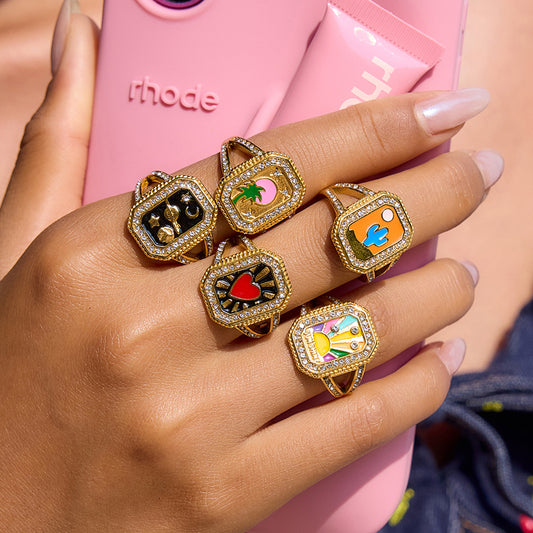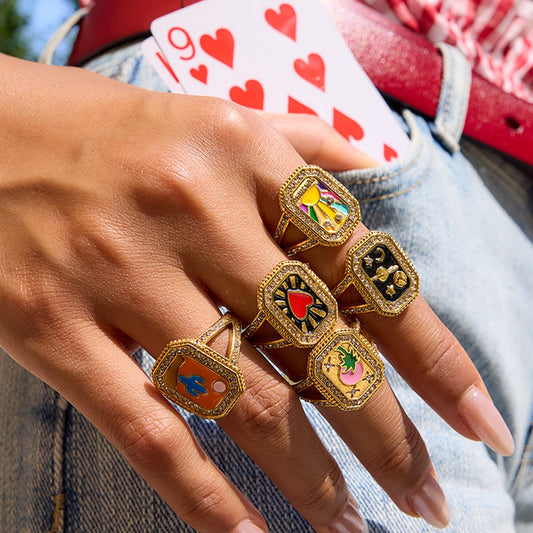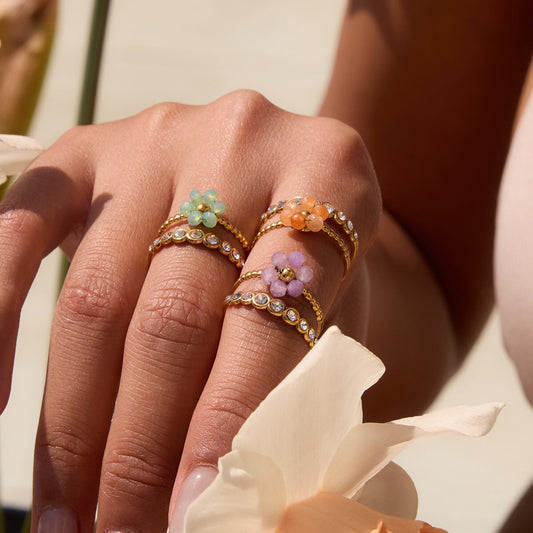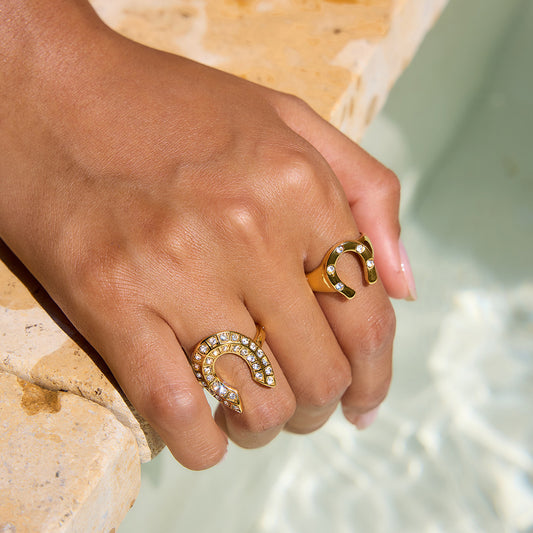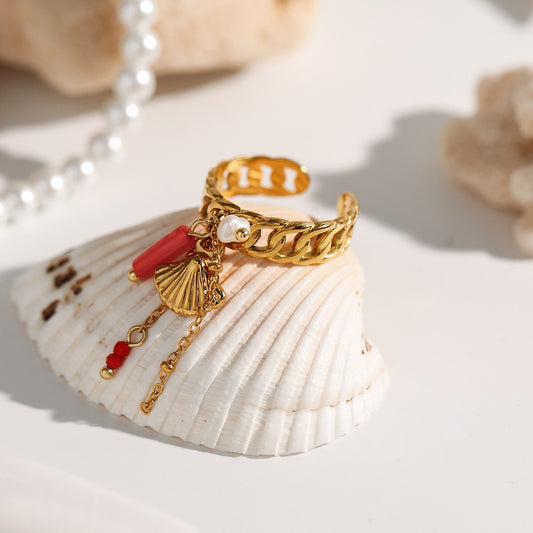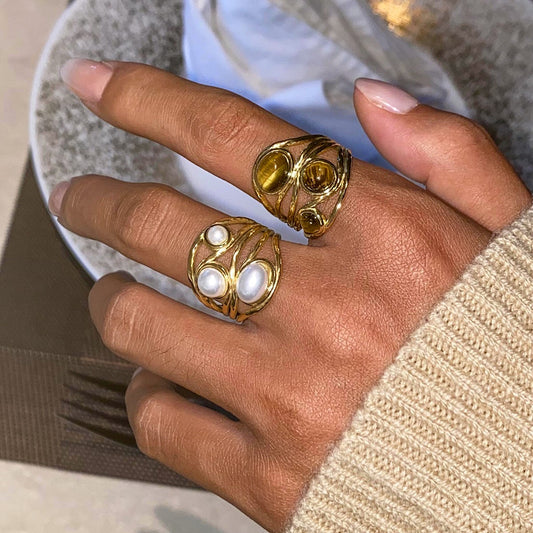A ring size chart in cm is the most reliable tool for ensuring your ring fits comfortably—whether you’re buying a gift, shopping online, or resizing a beloved piece. Jewelry market size was valued at USD 361.6 billion in 2024 and is forecast to touch USD 514.2 billion in 2032, and the market is expected to grow at a CAGR of 4.5% from 2025-2032. According to a 2024 survey by jewelry e-commerce platform Etsy, over 40% of online jewelry returns are due to incorrect ring sizes, with many shoppers admitting they guessed their size instead of using a cm-based chart. Unlike vague "small/medium/large" labels, a cm ring size chart uses precise circumference measurements (in centimeters) to match your finger to the right size. This guide will walk you through how to use a ring size chart in cm, how to measure your finger accurately, and common mistakes to avoid—so you never end up with a ring that’s too tight or too loose again.
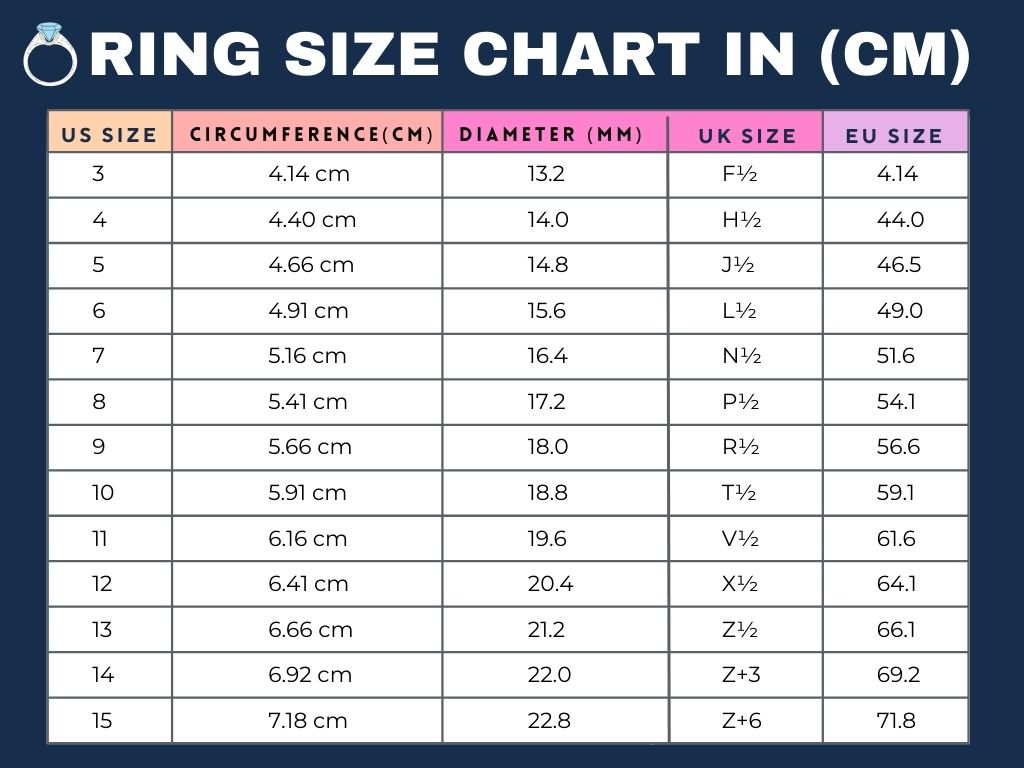
What Is a Ring Size Chart in CM?
Definition of a CM-Based Ring Size Chart
A ring size chart in cm is a reference tool that maps the circumference of your finger (measured in centimeters) to standard ring sizes (e.g., US sizes 4–13, EU sizes 40–75, or UK sizes A–Z). Each size on the chart corresponds to a specific cm measurement: for example, a US size 6 typically fits a finger with a 5.2 cm circumference, while a US size 8 matches a 5.7 cm circumference. Unlike charts that use diameter (the width of the finger), circumference-based cm charts are more accurate because they account for the full loop of the finger—critical for a comfortable fit.
Why CM Is the Most Accurate Measurement
Centimeters are a metric unit of measurement that offers consistent precision, making them ideal for ring sizing. Here’s why cm outperforms other units (like inches or vague size labels):
-
Universal Standard: CM is used globally, so a ring size chart in cm works whether you’re shopping from a US, European, or Asian jeweler. No need to convert between inches and cm—you can use the same measurement everywhere.
-
Precision: CM measurements can be broken down into decimals (e.g., 5.3 cm vs. 5.4 cm), allowing for finer adjustments. This is especially important for people with fingers that fall between standard sizes.
-
Easy to Measure: Most household tools (like a flexible measuring tape or string) can measure in cm, making it simple to get your size at home without special equipment.

How to Read a Ring Size Chart in CM
Key Components of a Standard CM Ring Size Chart
A reliable ring size chart in cm includes three core columns to help you find your size:
-
Finger Circumference (CM): This is your measured finger size (e.g., 5.0 cm, 5.5 cm, 6.0 cm).
-
Regional Size Labels: Converts the cm measurement to popular sizing systems, such as:
-
US Sizes (4–13): The most common system in North America.
-
EU Sizes (40–75): Used across Europe and many global brands.
-
UK Sizes (A–Z): Popular in the United Kingdom and Commonwealth countries.
-
Notes on Fit: Tips like "If your measurement is between two sizes, choose the larger one for comfort" or "Wide bands (6mm+) may require sizing up by 0.1–0.2 cm."
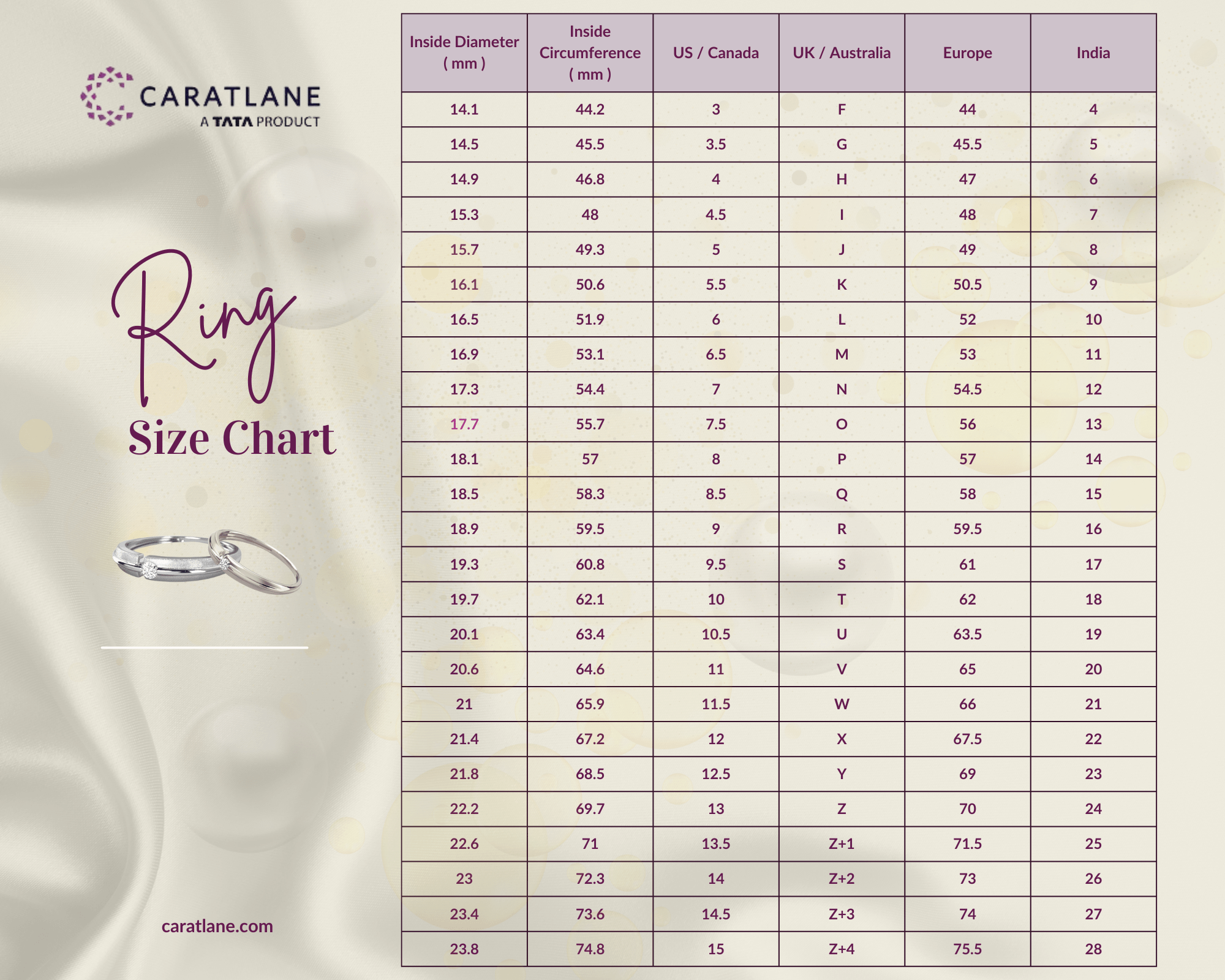
Example of a Basic Ring Size Chart in CM
To give you a quick reference, here’s a simplified version of a ring size chart in cm (focused on US and EU sizes):
|
Finger Circumference (CM) |
US Ring Size |
EU Ring Size |
|
4.9 cm |
4 |
40 |
|
5.2 cm |
6 |
44 |
|
5.5 cm |
7 |
47 |
|
5.7 cm |
8 |
50 |
|
6.0 cm |
9 |
53 |
|
6.3 cm |
10 |
56 |
How to Measure Your Finger for a Ring Size Chart in CM
Tools You’ll Need
You don’t need expensive jewelry tools to measure your finger for a ring size chart in cm—just one of these household items:
-
Flexible Measuring Tape: The easiest option (look for one with cm markings).
-
String + Ruler: If you don’t have a measuring tape, cut a thin string (e.g., cotton or thread) and a ruler that measures in cm.
-
Printable Ring Sizer: Many jewelers (like James Allen or Blue Nile) offer free printable ring sizers that you can cut out and wrap around your finger—just ensure your printer is set to "100% scale" to avoid inaccuracies.
Step-by-Step Measurement Process
Follow these steps to get a precise cm measurement for your ring size chart:
-
Choose the Right Finger: Measure the finger you plan to wear the ring on—each finger has a different size (e.g., your ring finger is typically smaller than your middle finger).
-
Measure at the Right Time: Fingers swell throughout the day (due to heat, exercise, or water retention), so measure in the evening (when fingers are at their largest). Avoid measuring after a workout, shower, or eating a salty meal.
-
Wrap and Mark:
-
If using a measuring tape: Wrap it around the base of your finger (where the ring will sit) and read the cm measurement directly. Ensure it’s snug but not tight—you should be able to slide a finger between the tape and your skin.
-
If using string: Wrap the string around your finger, mark the point where the string overlaps, then lay it flat against a ruler to measure the length in cm.
-
Double-Check: Measure 2–3 times to ensure consistency. If your measurements vary by 0.1 cm, use the larger number (e.g., if you get 5.4 cm and 5.5 cm, use 5.5 cm).
Common Measurement Mistakes to Avoid
-
Too Tight or Too Loose: A measuring tape or string that’s too tight will give a smaller cm measurement (resulting in a ring that’s too small), while one that’s too loose will give a larger measurement (resulting in a ring that falls off).
-
Ignoring Band Width: Wide rings (6mm or thicker) need more room to slide over your knuckle, so if you’re buying a wide band, add 0.1–0.2 cm to your measurement before checking the ring size chart in cm.
-
Measuring a Existing Ring (Incorrectly): If you have a ring that fits well, you can measure its inner diameter in cm and multiply by 3.14 (pi) to get the circumference. But avoid measuring the outer diameter—this will give you a larger, inaccurate size.

How to Use a Ring Size Chart in CM for Online Shopping
Matching Your CM Measurement to Regional Sizes
Online stores often use different sizing systems, so your ring size chart in cm is key to converting between them. For example:
-
If your finger measures 5.5 cm, a US-based store will list this as a size 7, while a European store will list it as a size 47.
-
Always check the store’s "Size Guide" page—most will include a ring size chart in cm that maps to their specific sizing. If not, use a universal cm chart (like the one in Section 2) to convert your measurement.
Tips for Buying Rings Online with a CM Chart
-
Read Reviews: Look for reviews that mention fit—if multiple customers say a brand’s rings run small, size up by 0.1 cm when using their ring size chart in cm.
-
Contact Customer Service: If you’re unsure, send your cm measurement to the brand’s customer service team—they can recommend the exact size for their rings.
-
Opt for Adjustable Rings: If you’re still nervous, choose an adjustable ring (many brands offer them for sizes 6–8) that you can tweak after delivery—just confirm it’s compatible with your cm measurement.
Ring Size Chart in CM for Gifting: How to Measure Someone Else
Sneaky Ways to Get Their Size Without Them Knowing
If you’re buying a ring as a gift and don’t want to ruin the surprise, use these tricks to get their cm measurement for the ring size chart:
-
Borrow an Existing Ring: Find a ring they wear on the same finger you’re buying for, then measure its inner diameter in cm (multiply by 3.14 to get the circumference).
-
Ask a Friend or Family Member: Their partner, sibling, or parent may know their ring size—or can help you measure a ring they own.
-
Use a "Test" Ring: Pretend to browse jewelry with them and say, "Let’s see what size this ring is—can you try it on?" Then note how it fits (e.g., "It’s a bit tight, so their size is probably 5.5 cm" or "It’s loose, so their size is 5.7 cm").
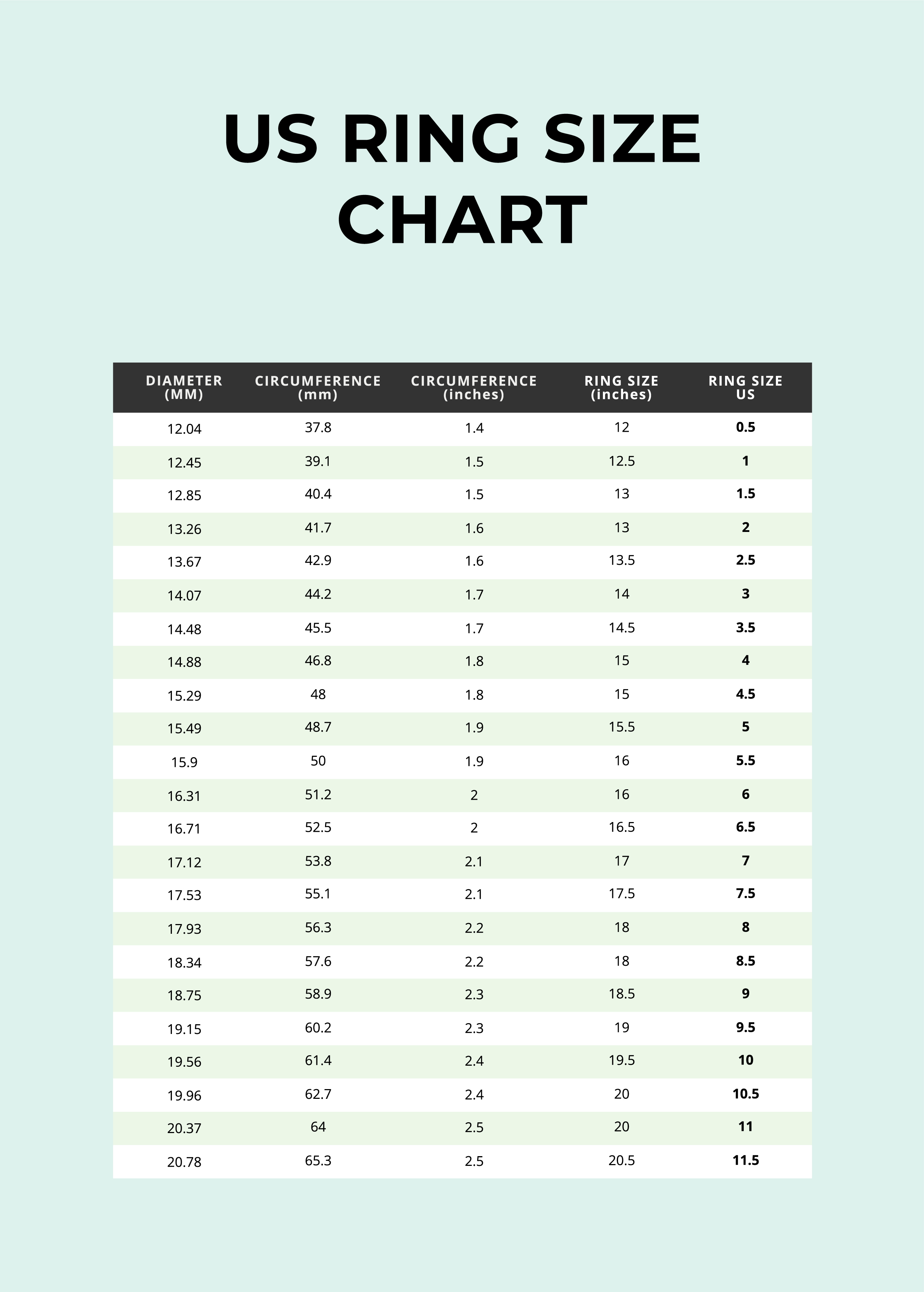
Gifting Tips for Uncertain Sizes
-
Choose a Resizable Ring: Many jewelers offer resizable rings (made of gold, silver, or platinum) that can be adjusted by 1–2 sizes—just confirm they can be resized before buying.
-
Include a Size Exchange Guarantee: Opt for stores that offer free size exchanges (like Mejuri or Etsy sellers) so the recipient can swap it for the right size using their ring size chart in cm.
-
Add a Personal Note: Include a note saying, "If it doesn’t fit, we can exchange it—just let me know your cm measurement!" This takes the pressure off and ensures they get the perfect fit.
How to Convert Other Units to CM for a Ring Size Chart
Inches to CM Conversion
If you have a ring size in inches (common in some US stores), convert it to cm using this formula: 1 inch = 2.54 cm. For example:
-
If a store says your size is 0.21 inches (circumference), multiply by 2.54 to get 5.33 cm—then use that number on your ring size chart in cm.
Diameter to Circumference (CM) Conversion
Some charts list ring sizes by diameter (the width of the ring’s inner circle) instead of circumference. To convert diameter (in cm) to circumference (for your ring size chart in cm), use this formula: Circumference = Diameter × 3.14 (pi). For example:
-
A ring with an inner diameter of 1.7 cm has a circumference of 1.7 × 3.14 = 5.34 cm.
Regional Size to CM Conversion
If you only know your size in a regional system (e.g., US size 7), use a ring size chart in cm to reverse-engineer your measurement. For example:
-
A US size 7 corresponds to 5.5 cm on most charts, while an EU size 50 corresponds to 5.7 cm.
Conclusion: Master the Ring Size Chart in CM for Perfect-Fitting Rings
A ring size chart in cm is your best tool for avoiding ill-fitting rings—whether you’re shopping for yourself or gifting to a loved one. By measuring your finger accurately (in the evening, with the right tools) and using a cm chart to match your measurement to regional sizes, you can ensure your ring fits comfortably and securely. Remember to account for band width, avoid common measurement mistakes, and leverage size exchange guarantees when shopping online.
Ready to find your perfect ring size? Grab a flexible measuring tape or string, follow our step-by-step guide to get your cm measurement, and use a trusted ring size chart in cm to find your size. Whether you’re buying a engagement ring, a everyday band, or a gift, the right size will make your ring feel like it was made just for you. Start measuring today—your perfect fit is just a few cm away!






